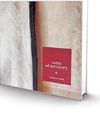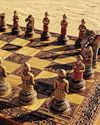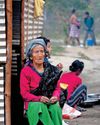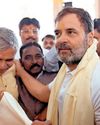
Aloud silence is the most deafening noise this election has created in Uttar Pradesh. It is a puzzling poll; not expected to flummox, but likely to checkmate popular perceptions.
The BJP is banking on the popularity of Prime Minister Narendra Modi, the unapologetically sanatan stance of Chief Minister Yogi Adityanath, the vastly improved law and order situation, and women’s security. The Samajwadi Party and the Congress are fighting as part of the INDIA bloc, displaying their pulling power with joint rallies. The Bahujan Samaj Party is locked in a solo battle for survival, and it seems to be frittering away its chance.
But ‘seems’ is as good as a poll prediction gets in Uttar Pradesh. Every questionWhy is the BJP fighting so hard if it is assured of a win? Do crowds at rallies really translate into votes? How far would a party go to survive?— holds its own answer, and spawns some more questions.
There is no wave, no rallying slogans. Phase after phase, the message has changed. And in every phase, the silent voter has turned out a tad less than s/he did in 2019.
Of the state’s 80 seats, 62 are with the BJP. The Congress has one; the SP, five; and the BSP, 10. The shadow of these elections will stretch to the state polls that are three years away.
Badri Narayan, director of the Govind Ballabh Pant Social Science Institute in Prayagraj, said this was an election of narrow margins—both in victory and defeat.
“There are three broad themes of the election,” he said. “An undercurrent of Modi’s popularity, the crucial role that the BSP will play in deciding margins, and the staunch opposition of Muslims that will benefit the Congress-SP.”
This story is from the {{IssueName}} edition of {{MagazineName}}.
Start your 7-day Magzter GOLD free trial to access thousands of curated premium stories, and 9,000+ magazines and newspapers.
Already a subscriber ? Sign In
This story is from the {{IssueName}} edition of {{MagazineName}}.
Start your 7-day Magzter GOLD free trial to access thousands of curated premium stories, and 9,000+ magazines and newspapers.
Already a subscriber? Sign In

Use multi-asset investing to overcome portfolio volatility
EQUITY MARKETS have been choppy during this year. After rallying for the better part of the first nine months of 2024, equities corrected sharply in October and November, before taking off once again on rally mode in December.

Twist of faith
Upamanyu Chatterjee is back with his wry sense of humour in his new novel, and most of it is directed at religion and spirituality

THE GLORY OF SARI
Saris of Memory weaves together history and textiles, highlighting key moments from the author's collection

We win together
We invented chess, which was pretty cool of us. The original game 'chaturanga'that is four divisions (infantry, cavalry, elephantry and chariotry)-was a war strategy game. When the game travelled to the Middle East, they mangled the Sanskrit and it ended up being called 'shatranj' instead.

BEATS THAT HEAL
Music ignites the light within us, says Grammy-winner Chandrika Tandon

Older, smarter, sexier
Those who worship him regardless of where he works have continued to do so. Such is the power of Alessandro Michele, that after being the face of some mega brands for 10 years (namely Gucci and now Valentino), he remains bigger than the labels themselves. His debut collection for Valentino was presented at the recent Paris Haute Couture Week, and it has been adored by his adorers.

The road to peace
Future political dialogues should explore means of ensuring a more robust autonomy to tribal communities

Diary of a Sherpa
Amitabh Kant's new book is a comprehensive account of the G20 Summit held in Delhi in 2023

The annoying orange
Everything is great. All is sunshine. I am an eternal optimist.\" It's the fad of our TikTok times everything is not great, the sun sets daily, nothing is eternal. If anything, everything is ephemeral, night brings darkness, and optimism often crumbles under the weight of history. British philosopher Roger Scruton warned: \"Hope untempered by the evidence of history is a dangerous asset, one that threatens not only those who embrace it, but all those within range of their illusions.\"

NO SEAT, YET UPBEAT
The Congress is buoyed by its increased vote share in Delhi, and feels it can push the AAP into further decline